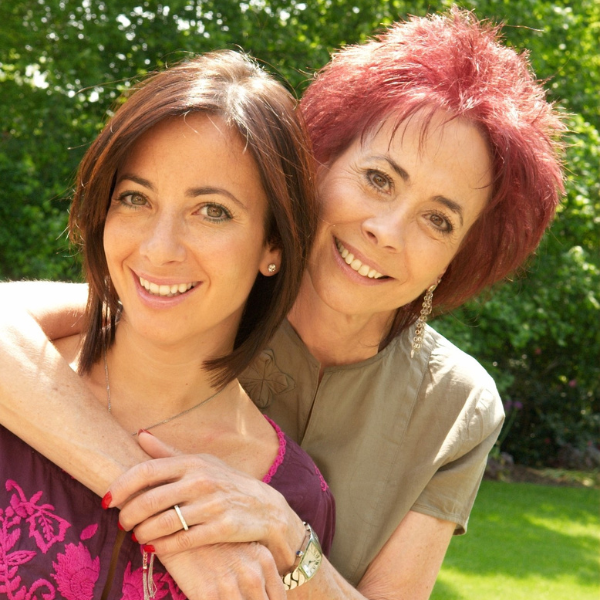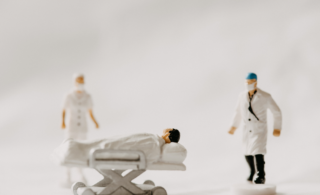
“Before I had breast cancer”, says Sara, “I thought that there was just ‘breast cancer’. I was surprised to learn that actually there are all sorts of different types.”
This is a very common misconception. So, here’s our very basic introduction to breast cancer with lots of links where you can find more information if you’d like to learn more. We’ve linked to information on the websites for Cancer Research UK, Macmillan and Breast Cancer Now all of which provide excellent information and advice and we encourage you to use these resources to find out more.
We’ve written this from our own experience and research (and it’s been reviewed by a breast care nurse). It’s just a basic overview and we encourage you to do your own research by talking to your medical team and using the reputable links at the end of this article. But don’t worry if this all sounds a bit overwhelming and you’d rather not read up on all of this yet. It’s important to do things at your own pace.
Note that your medical team will tell you what type of breast cancer you have. The pathologist analyses the cells that are taken from you during a biopsy and/or during your surgery. They carry out tests to work out what type of breast cancer you have, and they then tell your surgeon and oncologist so that they can work out your treatment plan. Everyone’s treatment plans depend upon the type of breast cancer they have (among other factors).
So, let’s look at, what exactly is breast cancer?
Breast cancer is when abnormal cells in the breast begin to grow and divide in an uncontrolled way and eventually form a growth (tumour). If you would like to read more about how breast cancer develops, Cancer Research UK have an informative page on their website.
Primary breast cancer
First, there is primary breast cancer. This is the most common form of breast cancer and it is cancer which manifests in the breast and has either not spread outside the breast, or has just spread to the lymph nodes.
Invasive/non-invasive and ductal/lobular
Breast cancer usually starts either in the ducts of the breast (ductal) or the lobules of the breast (lobular). It can be invasive (it has spread to the surrounding breast tissue) or non-invasive (it has not spread to the surrounding breast tissue).
- Invasive ductal carcinoma is the most common type of breast cancer. This is breast cancer that originates in the breast ducts and the cancer cells have spread outside the ducts into the surrounding breast tissue. See the Breast Cancer Now page for more information.
- Invasive lobular breast cancer is a type of breast cancer that tends to grow more slowly. It grows in a single cell line so rarely presents as a lump and it can be harder to see on imaging because it doesn’t form a solid tumour. Approximately 15% of all breast cancers are invasive lobular breast cancer. See our article written by Lobular Breast Cancer UK for more information.
- Ductal carcinoma in situ (DCIS) is where cancer cells have started to develop in the ducts of the breast but they have not spread outside the ducts. This is an early form of breast cancer. See the Breast Cancer Now page for more information.
- Lobular carcinoma in situ (LCIS) is not actually cancer but is a condition where there are abnormal changes in the cells that line the lobes. LCIS is also called lobular neoplasia. See the Macmillan page for more information.
Special Type or No Special Type
There are different types of breast cancer and these are grouped into (1) rarer breast cancers which are labelled “special type“, and (2) the more common breast cancers which are labelled “no special type“.
No special type breast cancer cells do not have any special features. Most breast cancers are this type.
Special type breast cancers have cells with particular features. Cancer Research UK have an informative page about these types of breast cancer. These are the rarer types of breast cancer.
Rare breast cancers
Most people are diagnosed with an invasive breast cancer of “no special type”. However, there are some rare types of breast cancer and we’ve included a list of some of these to show you that there definitely isn’t just a “one-size-fits-all” breast cancer. If you’ve been diagnosed with one of these rarer types, we’ve included links to the Breast Cancer Now information for your reference.
- Inflammatory breast cancer is where cancer cells grow along tiny channels (lymph vessels) in the skin of the breast, blocking the lymph vessels. It’s called inflammatory breast cancer because the breast becomes inflamed and swollen. This is because the body is reacting to the cancer cells in the lymph vessels. There may not be a lump in the breast. See the Macmillan page on inflammatory breast cancer.
- Occult breast cancer is breast cancer that can’t be felt or seen on imaging (for example, mammogram, ultrasound or MRI). It’s usually diagnosed when someone is being investigated for symptoms elsewhere in the body, for example enlarged lymph nodes.
- Tubular breast cancer is a type of invasive breast cancer – see the Breast Cancer Now page
- Cribriform breast cancer is a slow growing type of breast cancer – see the Breast Cancer Now page
- Mucinous (also called colloid) breast cancer is an invasive form with a substance called mucin growing around the cells – see the Breast Cancer Now page on this type of breast cancer.
- Medullary breast cancer – see the Breast Cancer Now page
- Papillary Breast Cancer – see the Breast Cancer Now page
- Micropapillary Breast Cancer – see the Breast Cancer Now page
- Malignant phyllodes – see the Breast Cancer Now page
- Metaplastic Breast Cancer – see the Breast Cancer Now page
Stage and grade
Breast cancer can be found at different points of growth and spread and this is what is commonly known as “grade” (how different the cancer cells are to normal breast cells and how quickly they are growing) and “stage” (the size of the cancer and how far it has spread – breast cancer may be described as stage 1, stage 2, stage 3 or stage 4). “Stage” and “Grade” are entirely different concepts and it is easy to get confused between them.
Stages and grades are not always clear at the outset, and they can change over the course of your treatment. Equally, stages and grades are sometimes unavailable, for example in the case of occult breast cancer. It’s therefore important not to place too much emphasis on stages and grades.
The Breast Cancer Now website is a helpful place to start to learn more about stages, grades and statistics.
Receptors (with links to the Breast Cancer Now website for more information)
And then there are things called “receptors” which are proteins on the breast cancer cells that hormones or other proteins can attach to and stimulate the cancer to grow. For example, some people have “oestrogen positive breast cancer” which means that oestrogen stimulates the growth of breast cancer cells. Some people have “progesterone positive breast cancer” which means progesterone stimulates the growth of breast cancer. Some people have “HER2+ve” breast cancer which means that the breast cancer cells have a higher than normal level of a protein called HER2 (human epidermal growth factor receptor 2) on their surface, which stimulates them to grow. Some people can have a combination of more than one type of receptor (for example, oestrogen positive and HER2+ve breast cancer). And equally, some people may not test positive for any receptors and they have what is called “triple negative” breast cancer (i.e. they test negative for all three receptors).
All of these factors (the type of breast cancer, the stage, the grade and the existence or not of receptors) affect the treatment that will be given (there are many different treatments) and the prognosis.
Secondary breast cancer
But now, let’s move on to a lesser known aspect of breast cancer: secondary breast cancer (this is stage 4 breast cancer and is also known as “advanced” breast cancer or “metastatic” breast cancer). Those of you who haven’t been affected by breast cancer may not even have heard of it. And for someone newly diagnosed with primary breast cancer, it can be quite scary to read about this. We’ve given a quick overview in the paragraph below, and for more information about this – whether you’ve been diagnosed with secondary breast cancer or you’d just like to know more – please see our section dedicated to Secondary Breast Cancer.
Secondary breast cancer is where breast cancer cells spread from the first (primary) cancer in the breast through the lymphatic or blood system to other parts of the body. Roughly five in every 100 people with breast cancer already have secondaries when their cancer is first diagnosed ** and some people who’ve had primary breast cancer go on to develop secondary breast cancer a number of years after their primary diagnosis. It is estimated that around 57,000 people are currently living with secondary breast cancer in the UK.** There is currently no cure for secondary breast cancer, but this does not mean this is not treatable. Depending on a number of factors (including how far the cancer has spread, where it has spread to and for how long the cancer has been spreading) the length of time that someone can survive after a diagnosis of secondary breast cancer varies greatly (up to a number of years) and it’s spread can often (but not always) be controlled with treatments.
*Statistics courtesy of Cancer Research UK
**Statistics courtesy of Breast Cancer Now
Secondary 1st provides some additional statistics about the progression of primary breast cancer to secondary breast cancer.
For more information please follow the links below.
Further information
Breast Cancer Now: A UK charity which provides care, information and support to people affected by breast cancer. The website provides advice on everything from diagnosis to after treatment, including how to tell the children. The website offers information pages, booklets to download or order, a magazine to subscribe to, blogs by people affected by breast cancer, forums where people can talk to others about all aspects of breast cancer, plus a nurses helpline.
Cancer Research UK: This website is not all about research but also provides plenty of helpful information and advice for people going through breast cancer. They have a good list of resources and organisations to help breast cancer patients.
Macmillan: The Macmillan website covers all types of cancers, not just breast cancer. It provides advice for all stages of breast cancer from diagnosis to life after treatment has ended. There are information pages, booklets to download or order, information about support groups near you and a nurses helpline. There is also a lot of information for people supporting someone with cancer.
NHS: The NHS website is vast. The section on breast cancer provides advice for breast cancer patients from symptoms to living with breast cancer.
Glossary of breast cancer terminology – this is our list of terms and words you may come across during your breast cancer journey, and what they mean.
Information about breast cancer treatment – If you would like to know more information about diagnosis, tests, staging and grades of breast cancer and treatment then you may wish to download (or order a hard copy to be sent to you in the post) of one of the Breast Cancer Now booklets. They have a booklet on every topic you might want to know about.
The Complete Guide to Breast Cancer by Liz O’Riordan and Trisha Greenhalgh is an excellent book where you can learn more about breast cancer.
Breast Cancer Now Family History of Breast Cancer Guide
Being Dense – this is a super website raising awareness about breast density.
Triple Negative Breast Cancer Foundation – this provides more information about TNBC.
Lobular Breast Cancer UK – A charity dedicated to support and information for people with lobular breast cancer.
Future Dreams hold a range of support groups, classes, workshops and events to help you and your carers during your diagnosis. These are held both online and in person at the London-based Future Dreams House. To see what’s on offer and to book your place, see here.
To return to the homepage of our Information Hub, click here where you can access more helpful information, practical advice, personal stories and more.
Reviewed February 2023
The information and content provided on this page has been written from a patient’s perspective then reviewed by a breast care nurse and it is intended for information and educational purposes only. It is not intended to substitute for professional medical advice. Please contact your medical team for advice on anything covered in this article and/or in relation to your personal situation. The links and/or recommendations in this article to third-party resources are for your information and we take no responsibility for the content contained in those third-party resources. Any product recommendations made in this article are not product endorsements and they are made without any affiliation to the brand of that product and we ask you to note that there may be other similar products available.
Share

Support awareness research
Donate to those touched by BREAST cancer
Sylvie and Danielle began Future Dreams with just £100 in 2008. They believed nobody should face breast cancer alone. Their legacy lives on in Future Dreams House. We couldn’t continue to fund support services for those touched by breast cancer, raise awareness of breast cancer and promote early diagnosis and advance research into secondary breast cancer without your help. Please consider partnering with us or making a donation.




